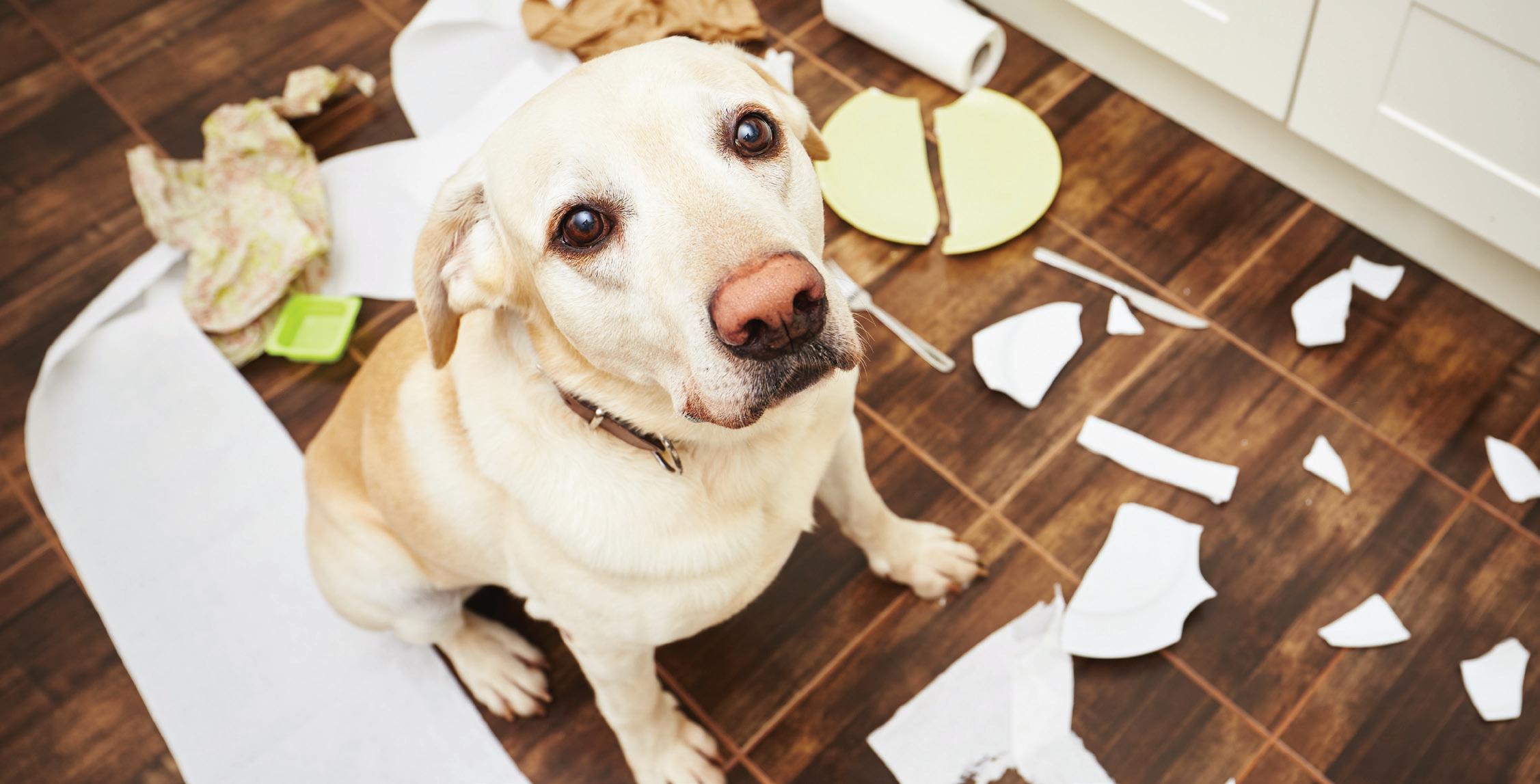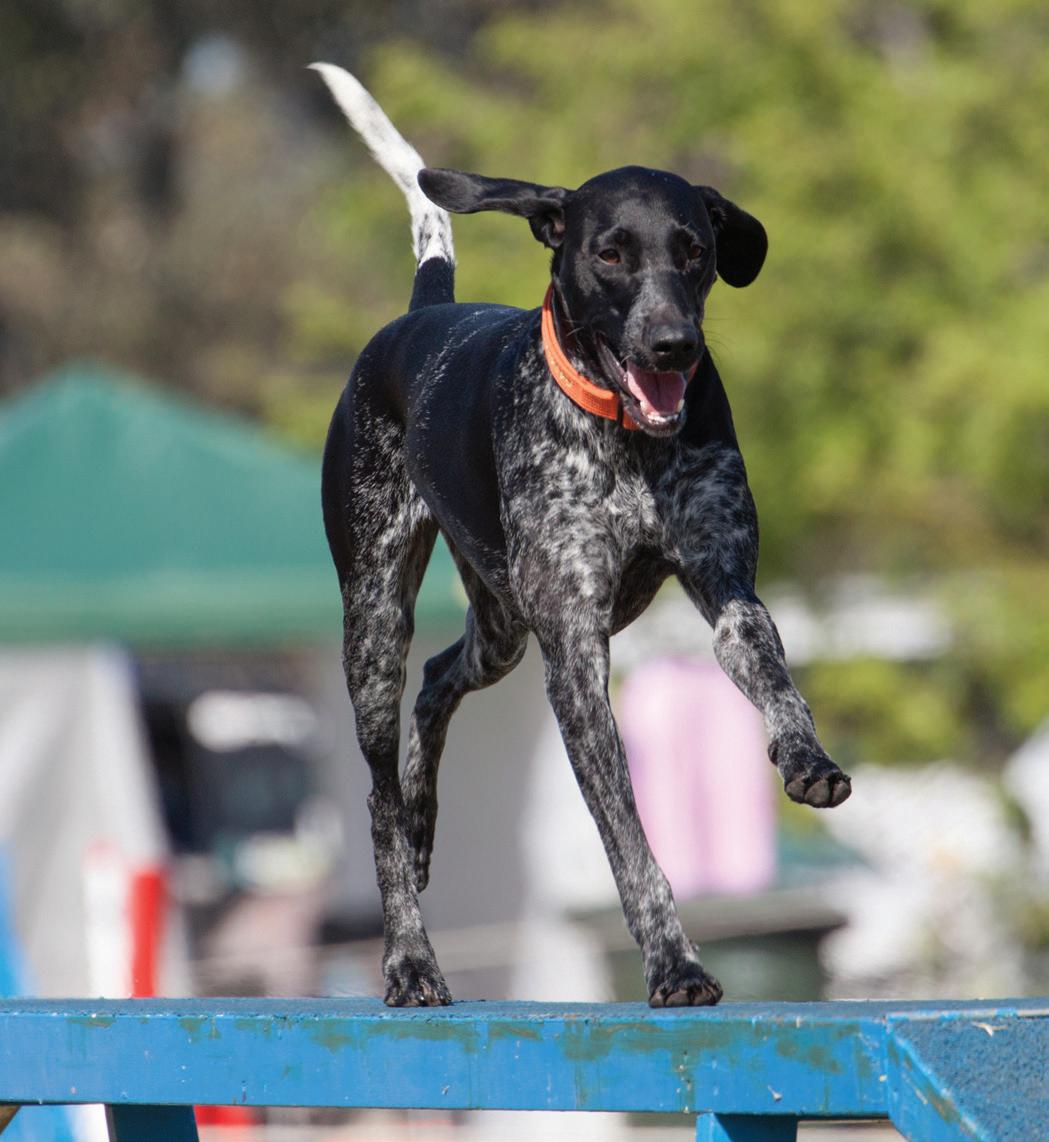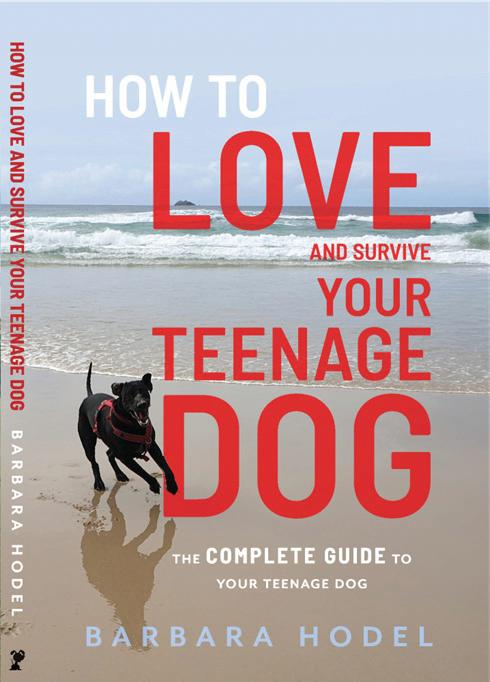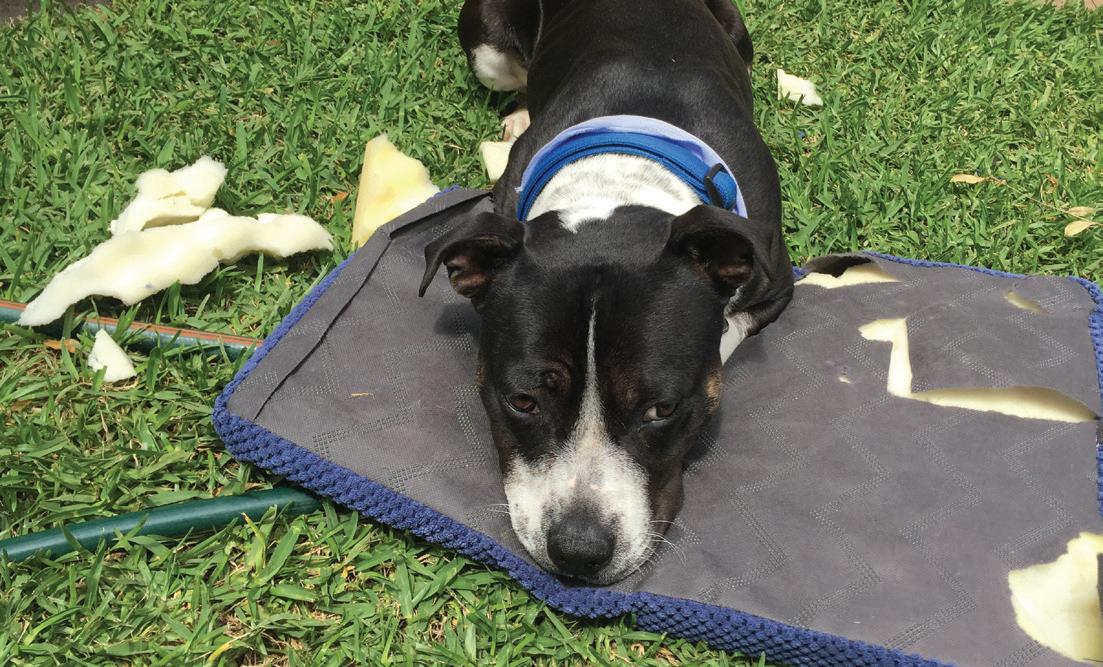
9 minute read
How to love & survive your teenage dog
from October 2020
by dogsnsw
FEATURE
How to love and suRvive your teenage dog .... and keep your sanity!
AN EXTRACT FROM BARBARA HODEL’S LATEST BOOK
The teenage phase is a challenging time for the humans, the breeders and the dogs.
Most new dog guardians find puppyhood challenging, but they are getting the support of their breeder and are hopefully attending a good puppy preschool class. There is also a lot of good information available on how to deal with the puppy stage challenges, small dog, small problems. But once the cute pup turns into an adolescent delinquent, things can start to fall apart. Humans are often surprised at the change in their puppy, as almost overnight they seem
to turn into unruly teenagers.
Humans are ill prepared for the challenges of a teenage dog: The emotional response and over the top reaction to some stimuli, forgotten training, increased exercise requirements, need for more mental stimulation and ongoing socialisation.
Dogs enter the teenage phase around 7 to 12 months and reach social maturity between 24 and 36 months. Smaller breeds and working dogs become teenagers earlier and mature earlier, too. Larger breeds and specifically gundogs, enter the teenage phase later and mature later.
This is the time when breeders might get a phone call from their clients asking for help. It is important to give sound advice as this is the time when dogs might be returned, end up in pounds and shelters or spend their days lonely in the backyard.
It does not have to be like this! We need to understand that all beings, humans and animals, need to go through the teenage phase to reach the stability of adulthood. More and more research is available on the brain function of dogs and we can assume that like in humans, parts of the brain mature at different rates. The more basic functions at the back of the brain mature first, whereas the parts in the brain responsible for controlling impulse or planning mature later. Emotional responses, especially the urgency and intensity of the emotional reaction, are affected during this time. We can see this when a teenage dog gets spooked by a man in a fluoro vest, or a backpack on the ground, they just keep lunging and barking and seem unable to assess the situation correctly or calmly. An older dog, once they realise it is a human or an inanimate object on the floor, will just walk off and calm down.
The teenage dogs do not do it on purpose but their brain, to put it casually, is still under construction. They are having a hard time to make good and calm decisions and need our help! Think of teenage dogs as the P platers of the
dog world.
These young dogs now spend more and more time at home in the backyard because they are too boisterous to walk, they pull like freight trains, do not come back when called and jump on visitors and their humans. They have forgotten their training and have selective hearing. They also have gotten into a few run-ins with other dogs at the off-leash park. They now become
unemployed and will soon be self-employed: meaning they dig up the backyard, eat the pool lights and bark at anything that moves. It is downhill from there and it becomes a self-fulfilling prophecy.
Their social skills deteriorate further and their world becomes very small. They meet the same people and dogs. Because they have stopped interacting with new people or dogs, they ‘forget’ how to deal with new situations or might get scared. Scared dogs are dogs who react inappropriately, or show aggression towards unknown dogs or people. This pattern can be fatal! Behavioural problems are one of the main reasons for euthanasia of young dogs and surrender to shelters.

But there are positive and effective ways of dealing with dogs during their teenage phase:
• Keep socialising
While early socialisation is important it does not stop with a puppy preschool, or at 16 weeks. Teenage dogs need to be socialised on an ongoing basis. They need to meet new people and dogs, go to new places and have new and positive experiences. Socialisation is not just exposure; it is creating positive associations!
• Attend a teenage dog training class
Attending a well-run class for teenage dogs with a force free qualified trainer helps with ongoing socialisation, provides support and guardians may realise that they are not alone.
• Find a balance between mental and physical stimulation
Teaching them something new on an ongoing basis, such as tricks or a brush up on obedience skills is a good start. Using part of their food for enrichment in food dispensing toys, recycle plastic bottles, pizza boxes, paper rolls, etc helps, too. Or, if so inclined, why not take up a dog sport: Agility, Obedience, Rally O, Nose Work, Fly Ball or Nose Work.

FEATURE
• Keep an open line of communication
Dogs do not speak English, but they communicate with the ones who listen, or more accurately, watch. They communicate with body language. While most of us will see when our dogs get really upset, we often miss the early signs of stress and discomfort. If we see these signs, they do not need to lunge or bark. The early stress signs have different names. I like to call them displacement behaviours, because it describes what we see: a normal behaviour displayed out of context. The main ones are lip licking, yawning, head turns, shake offs, intent sniffing. Dogs will lick their lips when we hold a treat in front of their nose, yawn when tired, turn their head when someone enters the room, shake off when wet and sniff if there is a new smell. However, if they do any of these when another dog or stranger approaches, they might be stressed. We should try to help them by increasing distance and reinforce them for looking at us or moving away calmly.
• Keep it positive
A classic is the couch. The dog is on the couch. The guardian first asks the dog to get off the couch, then ‘commands’ the dog to get off and then resorts to pulling the dog off, the dog growls or even snaps. Often this is the beginning of the end for a relationship.
Firstly, the dog is not on the couch because they plan on taking over the household and then the world. The dog is on the couch because it is the most comfortable place and they have not been taught to go to their bed. If the dog is not allowed on your couch, teaching a ‘go to bed cue’ is the first step. It is important that all family members are enforcing the same rules. Dogs do the wrong thing because they have not been trained properly, or the wrong things are reinforced. The best way to address unwanted behaviours is to teach an alternate behaviour out of context, in this case, go to bed, and then gradually bring it back to the problematic situation.
If necessary ‘interrupt’ (call their name) – ‘redirect’ (ask for an incompatible behaviour, like sit instead of jumping) –‘reinforce’ (treat, praise, toy, interaction). This should be our go-to approach if something goes really wrong.

• Reward the effort
Despite all the bravado they are showing, young dogs are insecure. We need to acknowledge the effort and reinforce all the good things instead of focusing on the bad stuff.
• Let them make choices if safe and possible
A lot of dogs are not going to the off-leash park anymore because they got into altercations with another dog. If no one was hurt, the dog is not aggressive, they just need more socialisation. Teaching a reliable recall is the first step we need to take, then we need to manage the environment. This means going to the park when it is not too busy and match our dog with suitable play mates or organise play dates. Hopefully, the guardians have attended a good puppy preschool that allowed for off leash interaction and are able to read body language and good play. Good play ebbs and flows, roles are reversed, the activities shift, there are pauses and invitations to play are frequent (play bow, eye flashing, lifted paws etc). If it gets too rough, we call the dogs back to us, asked them to sit to calm things down and start again. If a dog shows aggression seek professional help.

ABOUT THE AUTHOR ~ Barbara Hodel
Barbara Hodel is the President of the Pet Professional Guild Australia, a qualified and accredited professional dog trainer and the author of ‘How to love and survive your teenage dog’ (published in 2020). PPGA is a chapter of the Pet Professional Guild, a science-based, force free, professional body for the pet care industry, which includes veterinary behaviourists, dog, cat, horse and bird trainers, dog groomers and walkers, as well as day care centres. The PPGA offers free membership for pet dog owners. GeekWeek, a five-day virtual pet training conference, will be held online from 11 - 15 November 2020. https://www.petprofessionalguild.com/event-3909991

ABOUT THE BOOK
‘How to love and survive your teenage dog’ is a complete guide to your teenage dog. This book will help you to understand your teenage dog better and navigate the teenage months, by covering: an understanding of the unique challenges you and your teenage dog face, why and how your relationship matters in the training process, the role of anthropomorphism and consideration of dog emotions and minds, the benefits of positive reinforcement, the importance of lifelong socialisation, how to keep you and your dog’s sanity, despite some common setbacks, and promoting the value of calmness. You can and should, enjoy your teenage dog despite the difficult behaviours they show. The reward is a happy and well-adjusted friend for life! The book can be purchased on www.goodog.com.au/shop/ RRP: Paperback $29 + $9.90 delivery rate. eBook (on preorder) $20.00.
Image Credits: Page 10 & 12 Shutterstock.com Page 11: Top image by Grazia Pecoraro. Bottom image by Le Hammer. This page: Top image: Barbara Hodel. Middle image: Book cover. Bottom image by Grazia Pecoraro.
For a chance to win one of three copies of the book ‘How to love and survive your teenage dog’ by Barbara Hodel, please answer the following question: “Name a positive and effective way of dealing with dogs during their teenage phase?” Email your answer to competitions@dogsnsw.org.au along with your full name, address, phone number and DOGS NSW membership number. By Post: ‘How to love & survive your teenage dog’ competition DOGS NSW PO Box 632, St Marys NSW 1790






